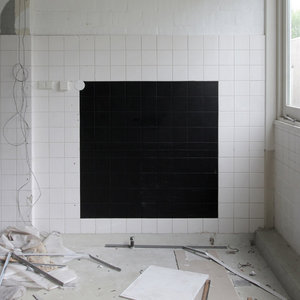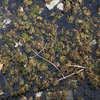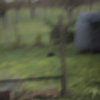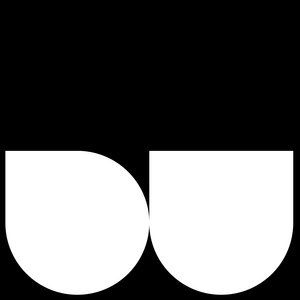Former Roc by Kero X Tetzzie
Tracklist
| 1. | FerroConcrete | 4:51 |
| 2. | FerroConcrete (MTCH rmx) | 4:18 |
| 3. | FerroConcrete (WDE remix) | 5:04 |
| 4. | Square Rebar | 5:49 |
| 5. | Trench Mesh | 6:07 |
| 6. | Trench Mesh (Huno Huno rmx) | 4:11 |
| 7. | Trench Mesh (WDE rmx) | 5:06 |
Videos
Credits
released March 27, 2025
-
remixes by:
WDE www.instagram.com/wetdreamsexciter/
Huno Huno www.instagram.com/ladeadxcorp/
MTCH mtch.bandcamp.com
-
cover design by Deconstructie™
instagram.com/deconstructie
www.deconstructie.com
"For about two years I had my studio in a building that was abandoned for the most part. I wandered around a lot on my own, documented the space, collected what I call samples (in the form of found objects) and created several site specific interventions. The wall painting in the artwork (which I printed on heavy paper and was also used as a starting point for the videos by Cristoph Grünberger) was created by reacting to the grid of tiles that are on many of the walls throughout the entire abandoned part of the building. My work deals with order and chaos, the dynamics in between construction and destruction and vice versa: deconstructie, deconstruction in dutch."
-
Video Informatics:
videos by:
Christoph Gruenberger www.theageofdata.net
When the Machine Dreams in Ruins
It started with the hauntingly beautiful stills of Erris Huigens—evocative portraits of abandoned architecture, decaying yet dignified. These images weren’t endpoints, but seeds. I fed them into an AI, stretching their reality into something larger: synthetic datasets, auto-generated yet anchored in Huigens’ melancholic aesthetic.
From there, I ran the results through a homegrown GPT-based motion prompt enhancer—an engine I trained myself, fine-tuned to detect narrative motion in spatial emptiness. Once primed, I handed the controls over to the machine. No rules, no restrictions.
What emerged was a cascade of randomized POVs through decaying corridors and forgotten cathedrals. VEO2 became my lens, but the AI was the explorer—drifting, gliding, sometimes stumbling through impossible hallways and dream-logic geometry. In the search for life, all I found were memories of places that never existed.
This wasn’t world-building. This was ghost-chasing. A machine trying to imagine how it feels to be lost.
-
remixes by:
WDE www.instagram.com/wetdreamsexciter/
Huno Huno www.instagram.com/ladeadxcorp/
MTCH mtch.bandcamp.com
-
cover design by Deconstructie™
instagram.com/deconstructie
www.deconstructie.com
"For about two years I had my studio in a building that was abandoned for the most part. I wandered around a lot on my own, documented the space, collected what I call samples (in the form of found objects) and created several site specific interventions. The wall painting in the artwork (which I printed on heavy paper and was also used as a starting point for the videos by Cristoph Grünberger) was created by reacting to the grid of tiles that are on many of the walls throughout the entire abandoned part of the building. My work deals with order and chaos, the dynamics in between construction and destruction and vice versa: deconstructie, deconstruction in dutch."
-
Video Informatics:
videos by:
Christoph Gruenberger www.theageofdata.net
When the Machine Dreams in Ruins
It started with the hauntingly beautiful stills of Erris Huigens—evocative portraits of abandoned architecture, decaying yet dignified. These images weren’t endpoints, but seeds. I fed them into an AI, stretching their reality into something larger: synthetic datasets, auto-generated yet anchored in Huigens’ melancholic aesthetic.
From there, I ran the results through a homegrown GPT-based motion prompt enhancer—an engine I trained myself, fine-tuned to detect narrative motion in spatial emptiness. Once primed, I handed the controls over to the machine. No rules, no restrictions.
What emerged was a cascade of randomized POVs through decaying corridors and forgotten cathedrals. VEO2 became my lens, but the AI was the explorer—drifting, gliding, sometimes stumbling through impossible hallways and dream-logic geometry. In the search for life, all I found were memories of places that never existed.
This wasn’t world-building. This was ghost-chasing. A machine trying to imagine how it feels to be lost.








